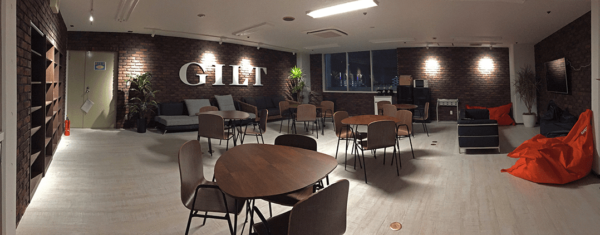Brought to you by Parallels

When online luxury retailer Gilt Groupe K.K. wanted to run Windows programs on its all-Mac infrastructure, it turned to a solution that could operate stably and at scale.
The Ginza, Tokyo-based retailer had two million members accessing its website in Japan and its more than 200 Mac devices were used by staff for anything from marketing and photography to business intelligence and analytics.
To enable staff in some departments to access Oracle and other Windows-specific applications, such as development tools, the IT team used Parallels Desktop Business Edition to run Windows virtual machines inside the Mac host operating system.
“Virtualizing Windows keeps it stable. We don’t have to modify the Windows environment much to make it work, and that’s because of Parallels Desktop Business Edition,” said Andrew Robinson, a senior IT support engineer at Gilt Groupe K.K.
“It gives us more time to handle bigger and more important infrastructure tasks,” he added.
Parallels Desktop software has been enabling Mac users to run Windows seamlessly for many years. Many enterprises are now seeking to use the more powerful business edition to give corporate users the flexibility of both OSes, while keeping the maintenance simple and tidy.
From luxury retail to education, organisations now turn to Parallels Desktop Business Edition for the scalability and versatility it offers. Key to these deployments is keeping things easy for end users.
At St. Peter’s Girls’ School in Australia, about 100 staff machines now run Windows on their Macs, thanks to Parallels Desktop. This lets teachers run both Windows and Mac software seamelessly side by side.
Again, the important decision to go with such a virtual environment came down to stability and scalability. With the success of this rollout, the school is seeking to deploy the software on students’ Macs, to let them run Windows productivity applications as well.
“With Parallels Desktop Business Edition, teachers at St Peter’s Girls’ School have never been more flexible in creating teaching aids that make teaching more fun, interesting, and effective,” said Nicolas Cronis, St Peter’s Girls’ School’s information and communication technology manager.
“In addition to its reliable performance, the solution is easy to use, allowing files to be dragged and dropped across different operating systems,” he added.
At a time when more content is available on the cloud via a Web browser or on a cross-platform app, is there still a need to run virtual machines on user computers?
For many organisations, the situation often demands a different approach. Central to any solution is a need to maximise the capabilities of users in an organisation, instead of forcing them to adapt to something less user-friendly, productive or stable.
Many development tools, for example, still run exclusively in Windows while designers often depend on Macs to work on their content. They need to work with one another seamlessly.
For Gilt Groupe K.K., the choice was an obvious one. Instead of running an environment with a hybrid of both Windows and Mac machines, which could complicate the setup and increase cost, it chose virtualisation.
Today, employees are encouraged to use both Windows and Mac applications. They zip into Windows when necessary and quickly return to a Mac environment to accomplish what they need to do efficiently and productively.
“My role is to provide the tools that people need to get their jobs done and do some research to introduce them to better tools rather than spending time trying to fix every little thing,” said Robinson.
“I’m here to make sure the infrastructure is stable and easy to use and is up and working,” he added.
Download a free trial of Parallels Desktop here or contact Ary Collet at acollet@parallels.com to find out more about the Parallels Desktop Business pricing.






